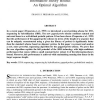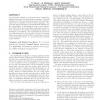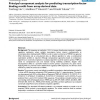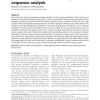168 search results - page 7 / 34 » Analysis of DNA Sequence Pattern Using Probabilistic Neural ... |
RECOMB
2000
Springer
13 years 11 months ago
2000
Springer
In a recent paper (Preparata et al., 1999) we introduced a novel probing scheme for DNA sequencing by hybridization (SBH). The new gapped-probe scheme combines natural and univers...
MM
2009
ACM
14 years 6 days ago
2009
ACM
The automatic analysis of social interactions is attracting significant interest in the multimedia community. This work addresses one of the most important aspects of the problem...
BMCBI
2005
13 years 7 months ago
2005
Background: The responses to interleukin 1 (IL-1) in human chondrocytes constitute a complex regulatory mechanism, where multiple transcription factors interact combinatorially to...
RECOMB
2003
Springer
14 years 7 months ago
2003
Springer
We describe a novel method for detecting the domain structure of a protein from sequence information alone. The method is based on analyzing multiple sequence alignments that are ...
BIB
2006
13 years 7 months ago
2006
One of the major goals of computational sequence analysis is to find sequence similarities, which could serve as evidence of structural and functional conservation, as well as of ...




